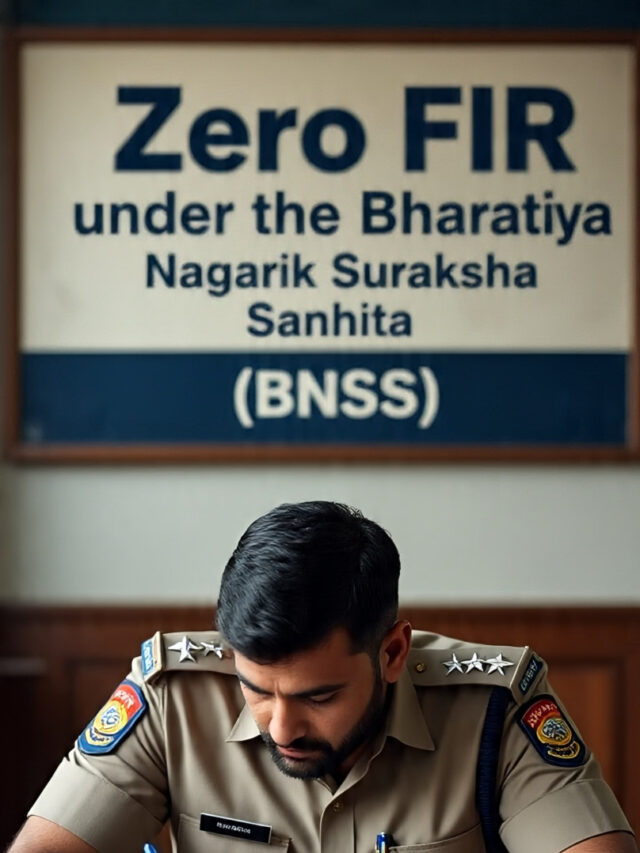Introduction
Corporate insolvency and liquidation are critical aspects of business law that deal with the financial failure of companies. When a corporate entity fails to meet its debt obligations, the law provides structured mechanisms for resolution or liquidation. In India, the Insolvency and Bankruptcy Code (IBC), 2016, seeks to consolidate and modernize the laws related to the restructuring and resolution of insolvency for corporate entities, partnership firms, and individuals, while ensuring the process is completed within a set timeframe.
In recent years, high-profile cases such as Jet Airways, DHFL, and more recently Go First Airways, have brought attention to the functioning and limitations of the insolvency resolution framework in India. This paper aims to delve deep into the current legal structure, the process of corporate insolvency and liquidation, and the challenges exposed by the Go First case.
1.Insolvency and Bankruptcy Code (IBC), 2016, provides the legal framework for insolvency and bankruptcy.
1.1 Objectives of IBC
The IBC was enacted to:
- Promote entrepreneurship.
- Maximize the value of assets.
- Ensure the availability of credit.
- Balance the interests of all stakeholders.
1.2 Structure and Key Institutions
The IBC provides for a streamlined process involving key institutions:
- Insolvency and Bankruptcy Board of India (IBBI): The IBBI is the governing body that regulates insolvency and bankruptcy processes in India.
- National Company Law Tribunal (NCLT): The adjudicating authority.
- Resolution Professional (RP): RP is responsible for handling and guiding the Corporate Insolvency Resolution Process (CIRP).
- Committee of Creditors (CoC): Represents financial creditors and makes key decisions.
1.3 Key Processes Under IBC
- CIRP: The Corporate Insolvency Resolution Process (CIRP) is a formal and time-sensitive procedure designed to resolve insolvency issues, generally to be completed within a period ranging from 180 to 330 days.
- Liquidation Process: Initiated if CIRP fails.
- Voluntary Liquidation: Voluntary liquidation applies to solvent companies that intend to cease operations and wind up their affairs.
- Fast Track Process: For small companies and startups.
2. Corporate Insolvency Resolution Process (CIRP)
2.1 Initiation of CIRP
CIRP can be initiated by:
- Financial Creditors under Section 7.
- Operational Creditors under Section 9.
- Corporate Debtor itself under Section 10.
The process begins with filing a petition before the NCLT, which must admit or reject the application within 14 days.
2.2 Moratorium Period
Once the CIRP is admitted, a moratorium under Section 14 is enforced, which:
- Halts legal proceedings.
- Stays recovery actions.
- Prevents asset transfer.
2.3 Appointment of Resolution Professional
The Interim Resolution Professional (IRP) is appointed to manage the debtor’s operations. The IRP is responsible for collecting creditors’ claims and forming the Committee of Creditors.
2.4 Role of CoC and Resolution Plan
- The CoC examines and selects the most suitable resolution plan.
- The proposed plan requires the consent of 66% of the CoC members to proceed.
- Upon approval by the National Company Law Tribunal (NCLT), the plan attains binding legal force.
3. Liquidation Process
3.1 When Does Liquidation Occur?
- If no resolution plan is received.
- If the CoC decides to liquidate.
- If the NCLT rejects the plan.
3.2 Role of Liquidator
The Resolution Professional (RP) is appointed as the liquidator, assumes control of the company’s assets, verifies claims from creditors, and oversees the sale of assets to distribute the proceeds among creditors.
3.3 Distribution of Assets: Waterfall Mechanism
As per Section 53 of the IBC:
- Insolvency Resolution Process costs and liquidation costs.
- Secured creditors and workmen dues (within 24 months).
- Employee wages (12 months).
- Unsecured creditors.
- Government dues and remaining secured creditors.
- Shareholders and equity holders.
4. Case Study: Go First Airways Insolvency
4.1 Background
Go First, formerly called GoAir, was a budget airline in India and was owned by the Wadia Group. In May 2023, Go First filed for insolvency citing operational disruptions due to the non-supply of engines by Pratt & Whitney.
4.2 Causes of Insolvency
- Engine Failure and Supply Chain Issues: Over 50% of the airline’s fleet was grounded due to faulty or unavailable engines from Pratt & Whitney.
- Loss of Revenue: With a grounded fleet, Go First could not generate sufficient revenue.
- Rising Operational Costs: Fuel prices, airport charges, and lease liabilities accumulated.
- COVID-19 Pandemic Aftermath: After the COVID-19 pandemic, the airline found it difficult to recover from the heavy financial losses it had suffered.
- High Debt Burden: Go First had outstanding debts exceeding ₹11,000 crore.
4.3 Filing Under Section 10
Go First initiated insolvency proceedings under Section 10 of the Insolvency and Bankruptcy Code (IBC), a provision that permits companies to voluntarily file for insolvency. After accepting the application, the NCLT appointed an Interim Resolution Professional to manage the company’s insolvency process.
4.4 Controversies and Legal Battles
- Lessors’ Objections: Aircraft lessors approached the NCLT and Delhi High Court, claiming they should be allowed to repossess aircraft during the moratorium.
- Moratorium Clash: The Supreme Court eventually ruled that the IBC moratorium applies to leased aircraft, thereby preventing repossession during CIRP.
- Directorate General of Civil Aviation‘s Role: The DGCA’s decision to cancel Go First’s flying license dealt a major blow to the airline’s potential for revival during the insolvency resolution process.
4.5 Stakeholder Implications
- Employees: Over 5,000 employees were impacted with uncertainty over salaries and job continuity.
- Creditors and Lessors: Creditors were locked into a long CIRP, while lessors couldn’t retrieve assets, affecting future leasing decisions.
- Passengers: Thousands of tickets were canceled, triggering consumer claims.
5. Lessons and Legal Insights from Go First Case
5.1 Applicability of Moratorium to Aircraft
The case sparked debate about the jurisdictional interplay between IBC and aviation regulations. The Supreme Court’s judgment strengthened the IBC’s moratorium provisions, which could have broader effects on leasing contracts in different industries.
5.2 Cross-Border Insolvency
Go First’s asset pool included leased aircraft from international entities. The case exposed India’s lack of a robust cross-border insolvency framework. The UNCITRAL Model Law has not yet been adopted.
5.3 Importance of Operational Risk Management
Dependence on a single engine supplier led to operational vulnerability. It is crucial for companies to adopt diverse sourcing methods and proactive risk management strategies to minimize operational vulnerabilities.
5.4 Potential Misuse of Section 10
There were allegations that Go First used IBC to avoid paying dues and shield itself from commercial consequences. This raises concerns about the voluntary insolvency route being exploited.
6. Comparative Insight: Jet Airways vs Go First
| Criteria | Jet Airways | Go First |
|---|---|---|
| CIRP Initiation | By Financial Creditor | By Corporate Debtor |
| Primary Cause | Financial Mismanagement | Technical & Supply Chain Disruption |
| Fleet Status | Seized or Repossessed by Lessors | Protected under IBC Moratorium |
| Outcome (as of 2025) | Resolution plan accepted, slow recovery | CIRP ongoing, flying license suspended |
| Employee Impact | Over 20,000 affected | Around 5,000 affected |
7. Challenges in Indian Insolvency Framework
7.1 Delays in Resolution
Though IBC mandates resolution in 180-330 days, cases often drag on for years due to litigation, appeals, and procedural hurdles.
7.2 Low Recovery Rates
Recovery for creditors often falls below expectations. Haircuts of 60–80% are not uncommon.
7.3 Judicial Overload
NCLTs are burdened with thousands of cases, leading to inefficiencies and inconsistencies in adjudication.
7.4 Lack of Cross-Border Mechanism
Global businesses with international creditors suffer due to the absence of a formal cross-border insolvency regime.
8. Recent Reforms and Future Outlook
8.1 Proposed Amendments
- Establishment of cross-border insolvency framework based on UNCITRAL.
- Greater clarity on treatment of operational creditors.
- Reforms to prevent misuse of Section 10 filings.
8.2 Enhanced Role of Technology
Digital claim verification and e-auctioning are being adopted to reduce procedural bottlenecks.
8.3 Sector-Specific Protocols
There is a growing call to create sector-specific insolvency protocols—especially for aviation, infrastructure, and banking.
Conclusion
The Go First Airways case has highlighted the evolving landscape of corporate insolvency and liquidation in India. While the IBC has been a transformative piece of legislation, its implementation faces practical, legal, and infrastructural challenges. The balance between protecting creditor interests, safeguarding debtor rights, and addressing sector-specific concerns requires careful consideration.
Going forward, India needs to strengthen judicial capacity, adopt cross-border protocols, and ensure that insolvency law serves its foundational purpose: revival of viable businesses and equitable exit of failed enterprises.
Frequently Asked Questions
What is the Insolvency and Bankruptcy Code (IBC), 2016?
The Insolvency and Bankruptcy Code (IBC), 2016, is a comprehensive legal framework introduced in India to govern the insolvency and bankruptcy proceedings of companies, partnerships, and individuals. It aims to ensure timely resolution of insolvency, protect the interests of stakeholders, and promote the smooth functioning of credit markets.
What is Corporate Insolvency Resolution Process (CIRP)?
CIRP is a time-bound process under the IBC aimed at resolving the insolvency of a corporate debtor. The process, typically lasting between 180 and 330 days, involves the appointment of a Resolution Professional (RP) who takes charge of the company’s affairs. The Committee of Creditors (CoC) then evaluates and approves a resolution plan to revive the company.
What was the Go First Airways insolvency case about?
Go First Airways (formerly GoAir), a low-cost airline, filed for insolvency in May 2023 due to operational disruptions caused by engine supply issues from Pratt & Whitney. The airline had accumulated significant debt and struggled with a grounded fleet, rising operational costs, and the aftermath of the COVID-19 pandemic.

























